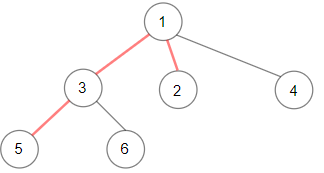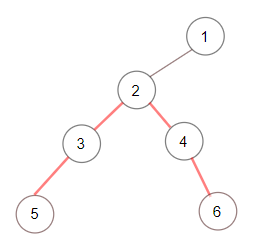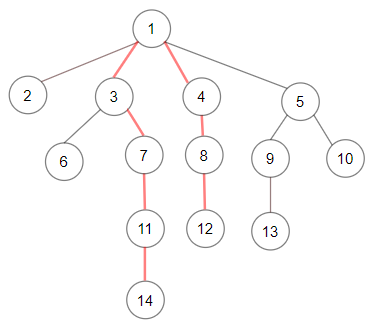1522. Diameter of N-Ary Tree
Description
Given a root of an N-ary tree, you need to compute the length of the diameter of the tree.
The diameter of an N-ary tree is the length of the longest path between any two nodes in the tree. This path may or may not pass through the root.
(Nary-Tree input serialization is represented in their level order traversal, each group of children is separated by the null value.)
Example 1:

1 | Input: root = [1,null,3,2,4,null,5,6] |
Example 2:

1 | Input: root = [1,null,2,null,3,4,null,5,null,6] |
Example 3:

1 | Input: root = [1,null,2,3,4,5,null,null,6,7,null,8,null,9,10,null,null,11,null,12,null,13,null,null,14] |
Constraints:
- The depth of the n-ary tree is less than or equal to
1000. - The total number of nodes is between
[1, 10^4].
Hints/Notes
- 2025/04/15 Q3
- dfs
- Leetcode solution
Solution
Language: C++
1 | /* |